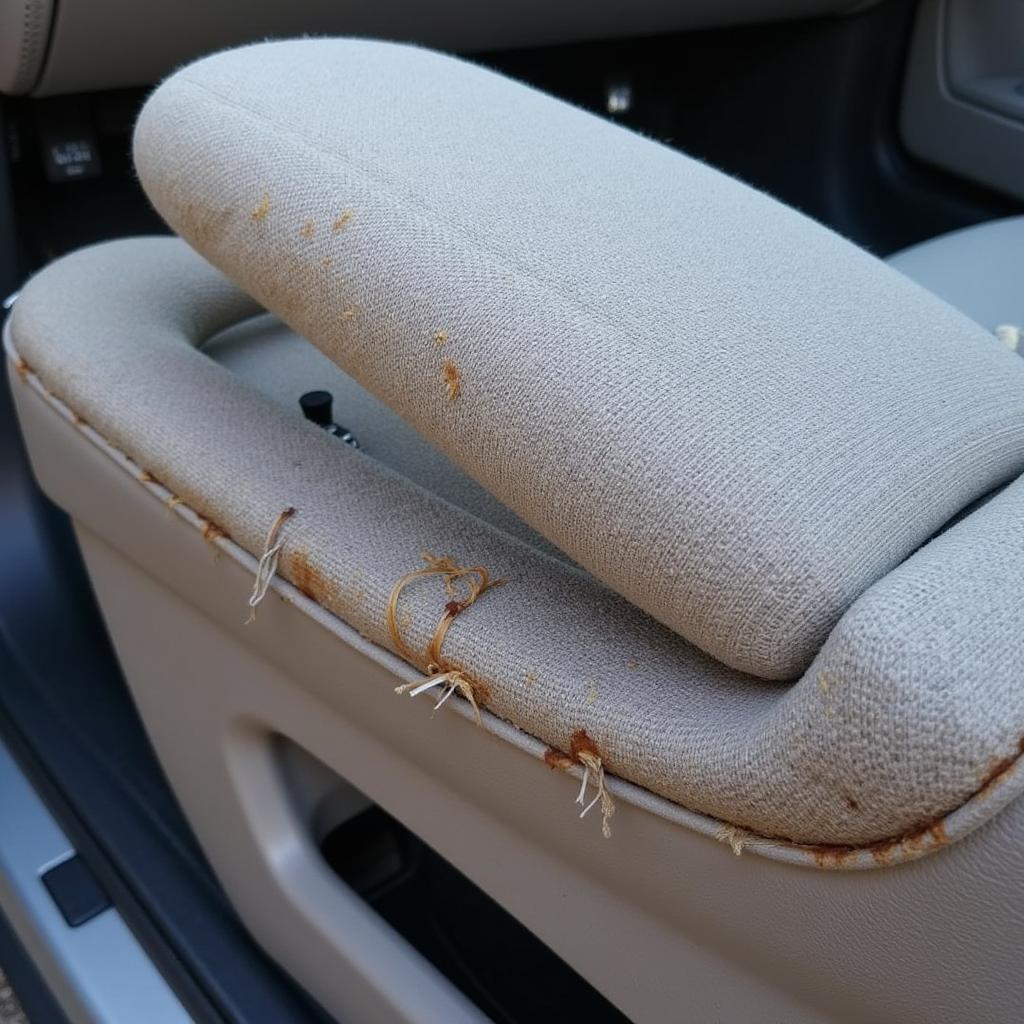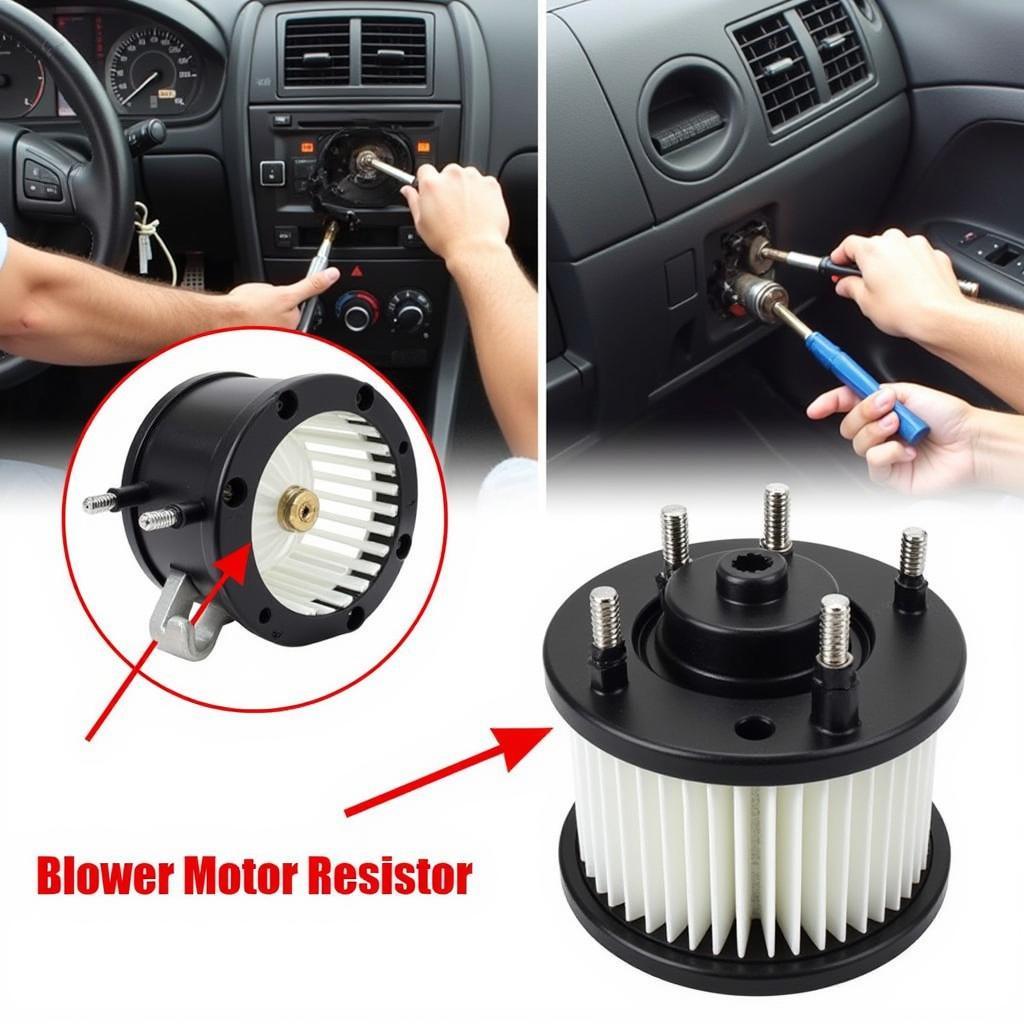A failing flywheel can cause a range of driving issues, from vibrations to difficulty starting. Knowing How To Fix A Flywheel On A Car is a valuable skill for any DIY mechanic. This guide provides a comprehensive walkthrough of the process, covering everything from diagnosis to replacement.
Identifying Flywheel Problems: Is Your Flywheel the Culprit?
Before diving into a flywheel repair, it’s crucial to ensure the flywheel is actually the problem. Common symptoms of a bad flywheel include:
- Chattering or grinding noises: Especially when starting or stopping the engine.
- Vibration in the clutch pedal: A sign of a warped or damaged flywheel.
- Difficulty starting the engine: Particularly if the starter struggles to engage.
- Burning smell: Indicating excessive heat and friction.
If you’re experiencing these symptoms, your flywheel might need attention. However, similar issues can be caused by other components, like the clutch or starter. A thorough diagnosis is essential before embarking on any repairs. Don’t forget that a failing starter can also cause starting issues. Check out how much does it cost to fix your car starter for more information.
Gathering the Necessary Tools for Flywheel Repair
Tackling a flywheel repair requires specific tools. Assemble these beforehand to streamline the process:
- Jack and jack stands: Safety first! Securely lift and support the vehicle.
- Wrench set: For removing bolts and fasteners.
- Socket set: Including extensions and a universal joint.
- Torque wrench: Essential for tightening bolts to the correct specifications.
- Flywheel puller: A specialized tool for removing the flywheel.
- Clutch alignment tool: Ensures proper clutch disc alignment during reassembly.
- New flywheel: Opt for a high-quality replacement that matches your vehicle’s specifications.
- New flywheel bolts: Never reuse old flywheel bolts.
- Gloves and safety glasses: Protect yourself from potential hazards.
Step-by-Step Guide on How to Fix a Flywheel on a Car
Now, let’s dive into the step-by-step process of fixing your car’s flywheel:
- Disconnect the battery: This crucial safety step prevents accidental electrical shocks.
- Remove the transmission: This involves disconnecting the driveshaft, shifter linkage, and other related components.
- Access the flywheel: Once the transmission is out, the flywheel will be visible on the back of the engine.
- Remove the flywheel bolts: Use a socket and wrench to carefully remove the bolts securing the flywheel.
- Extract the flywheel: Using a flywheel puller, carefully remove the flywheel from the crankshaft.
- Install the new flywheel: Align the new flywheel with the crankshaft and secure it with new flywheel bolts.
- Torque the flywheel bolts: Use a torque wrench to tighten the bolts to the manufacturer’s specified torque.
- Reinstall the transmission: Carefully reconnect all components, including the driveshaft and shifter linkage.
- Reconnect the battery: Restore power to the vehicle.
- Test drive: Verify that the flywheel issue is resolved and there are no new problems.
Remember, if you’re unsure about any step, consulting a qualified mechanic is always recommended. A slipping clutch can also mimic flywheel problems. Learn more about how to fix a slipping clutch on a car.
“A properly installed flywheel is critical for smooth engine operation,” says automotive expert, Dr. Benjamin Carter, Ph.D., Mechanical Engineering. “Using the correct tools and following the manufacturer’s instructions is essential for a successful repair.”
Should I Resurface or Replace My Flywheel?
Resurfacing can be a cost-effective solution for minor flywheel damage, like light scoring or hotspots. However, severely warped or cracked flywheels require replacement.
“Resurfacing is a viable option if the flywheel isn’t significantly damaged,” advises Ms. Sarah Miller, an experienced automotive technician. “However, replacement is often the best choice for ensuring long-term reliability.” A failing pull start can be frustrating. Find out how to fix a pull start on a nitro car for useful tips.
Conclusion
Learning how to fix a flywheel on a car empowers you to address a potentially significant engine problem. This comprehensive guide provides the necessary steps and expert advice for a successful repair. While DIY repairs can be satisfying, don’t hesitate to contact a professional if you encounter any challenges. For further assistance, connect with AutoTipPro at +1 (641) 206-8880 or visit our office at 500 N St Mary’s St, San Antonio, TX 78205, United States. If your car isn’t turning on, here’s a helpful resource: how to fix car not turning on. And for clutch related issues, check out how to fix clutch in car.






Leave a Reply